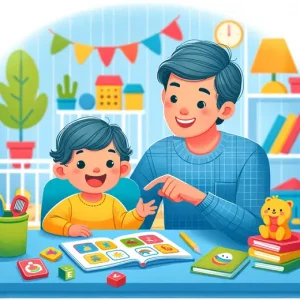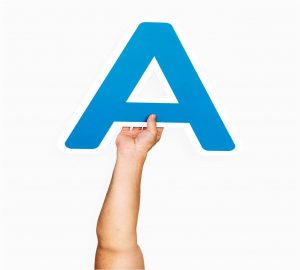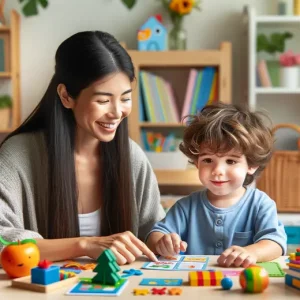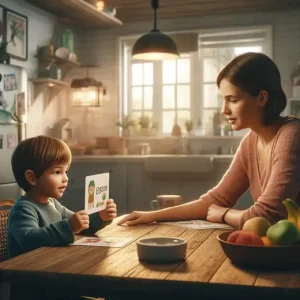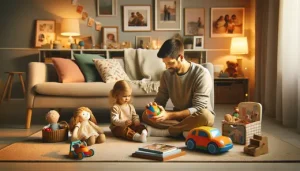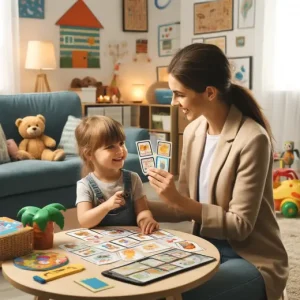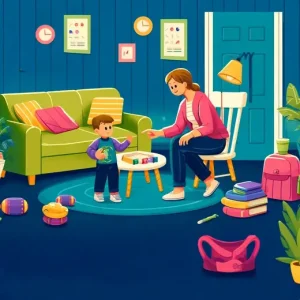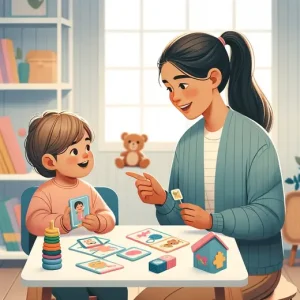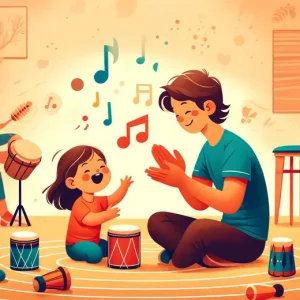Learn Plurals at Home: Fun Plural Playtime Activity
By Rajini D
Last Updated: March 19, 2024
Step into the world of Plural Playtime, a delightful and educational activity crafted to teach your child about forming plurals. Designed with young children in mind, especially those with developmental delays or special needs, this engaging guide helps children grasp the concept of single versus multiple items in a fun and interactive way.
Detailed Activity Instructions:
Setting the Scene:
Begin ‘Plural Playtime’ by gathering a variety of objects that are easy to count and can be used in pairs or groups, such as toys, fruits, or socks. Create a cozy space for exploration and learning.
Introducing Singular and Plural Forms:
Initiate the activity with a single object, name it, and then add another to form a pair. For example, ‘Here is one ball. Now we have two balls.’ Emphasize the transition from singular to plural, making the concept clear through repetition and visual aids.
Everyday Situations as Learning Opportunities:
Extend the learning to everyday situations, such as snack time. During this time, you might say, ‘You have one apple. Look, I have two apples.’ Using relatable contexts helps reinforce the understanding of singular and plural forms in a practical way.
Engaging Sorting Games:
Enhance the learning experience by creating a sorting game. Encourage your child to group single items and then multiple items, reinforcing the understanding of singular and plural forms through hands-on activities.
Addressing Potential Concerns:
Difficulty Grasping Singular vs. Plural Concepts:
If your child struggles to differentiate between singular and plural, incorporate visual aids and repetition. Start with clear distinctions in quantities, like one versus many, using hand gestures to emphasize the differences.
Limited Engagement or Interest:
Keep the activity engaging by involving your child’s favorite toys or characters. Transform the learning process into a playful game, sustaining interest and making the exploration of plurals enjoyable.
Mixing Up Singular and Plural Forms:
Mixing up forms is a common occurrence at this stage. Gently correct mistakes with a smile and repeat the correct form, using simple, clear examples to reinforce learning positively.
Objective of the Activity:
‘Plural Playtime’ aims to help your child understand the difference between single and multiple items, a fundamental aspect of language development. By making the learning process enjoyable, this activity lays the foundation for effective communication skills.
Closing and Additional Tips:
In the realm of ‘Plural Playtime,’ learning about plurals should be fun and pressure-free. Praise your child’s efforts and progress, regardless of size. Use everyday moments to reinforce the concept of singular and plural forms. Enjoy this playful exploration of language together!
About the Author:
Rajini Darugupally
M.Sc., Speech-Language Pathologist (9+ years of experience)
Rajini is a passionate and dedicated Speech-Language Pathologist with over 9+ years of experience, specializing in both developmental speech and language disorders in children and rehabilitation in adults. Driven by a desire to empower each individual to find their voice, Rajini brings a wealth of experience and a warm, genuine approach to therapy.
Currently, at Wellness Hub, she thrives in a team environment that values innovation, compassion, and achieving results for their clients.
Connect with Rajini to learn more about how she can help you or your loved one find their voice.
Book your Free Consultation Today
Parent/Caregiver Info:
Client’s Details:
* Error Message
